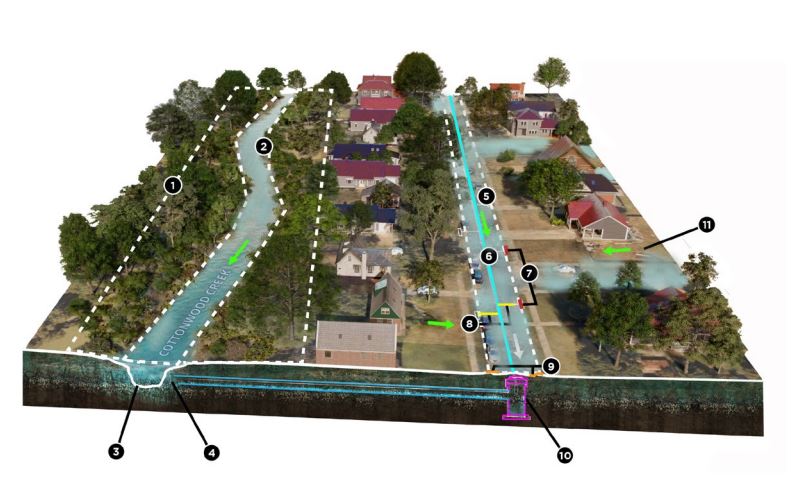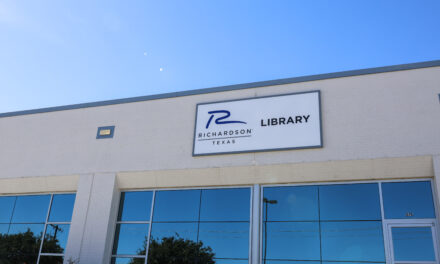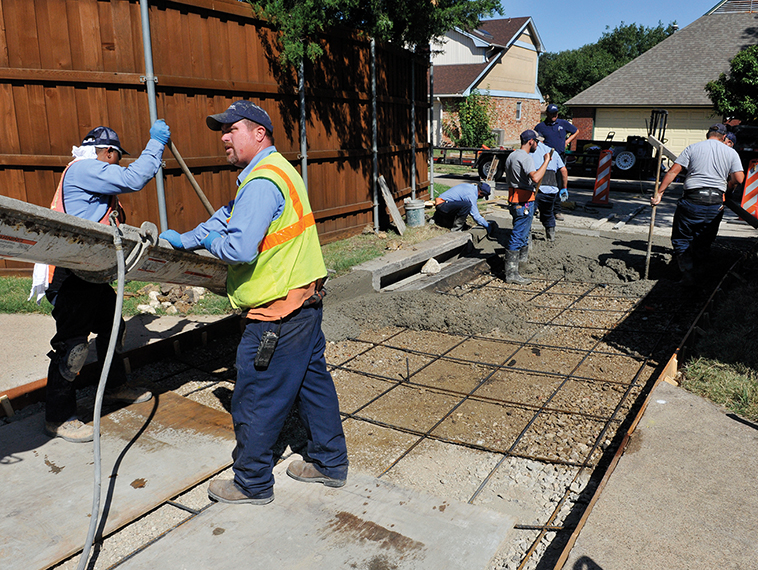There are 362 miles of underground storm drain line within the City of Richardson’s stormwater drainage system. The system is designed to direct rainfall to drain lines and creek beds before emptying into larger bodies of water downstream.
The drainage system is designed to deal with typical rainstorms that can occur frequently as well as more extreme storms that may only have a one percent chance of occurring, on average. During a typical storm the underground system can handle the water produced from the storm that has a 10-20 percent chance of happening in a year. However, during an extreme storm public streets and alleys, also called the right of way, are designed to handle the additional water. This means those areas could see stormwater begin to pond up to the top of the street curb. When this happens, the system is still functioning how it was intended.
To give you a better idea of the system, look at the picture below. It shows the Cottonwood Creek drainage system, one of the 12 drainage basins in the City.
Cottonwood Creek originates near the UT Dallas campus and drains south through residential areas before ultimately emptying into White Rock Creek. In the residential areas, stormwater drains from yards into street gutters. It is then collected via curb inlets and dishcharges into the creek. You will see these inlets at low spots along the street. This helps keep water away from homes and businesses.
The image below shows how the drainage system works during an extreme event. The additional stormwater may pond up into the street and be stored in the underground storm drain system. This would happen until the river-borne flood surge has moved downstream and the water level in the creek has receded. Some residents may also see temporary flooding in yards.
During a typical storm, there would be minimal water in the streets and the water would be able to drain freely into the underground system and into the creek. In this case, the movement of the water would not be restricted by a river-borne flood surge.
You may not be able to do much about the excess water in the street during an extreme storm, but you can do a lot to promote positive drainage on and around your property. This will help make sure that the overall drainage system is working as designed. You are encouraged to eliminate debris and blockages from your property. This includes old tires, garbage, yard clippings and other items. It is also important to keep storm inlets and the streets free of leaves and other debris. Call the City’s Brush and Bulky Item Collection (BABIC) at 972-744-4111 for yard debris pickup. You can also use the designated pickup days for bagged leaves and similar materials. Visit www.cor.net/babic for more information.
It is also important to ensure the proper grading of your home is preserved. There should be a gentle slope away from your house, which helps keep the water draining away and not toward your home. You should also make sure gutter and pipes are directed away from your house. Try to make sure water drains into vegetated or graveled areas first for filtration before leaving your property.
Additional information about how to promote positive drainage and learn more about the stormwater drainage system in the City, visit www.cor.net/stormwater.





